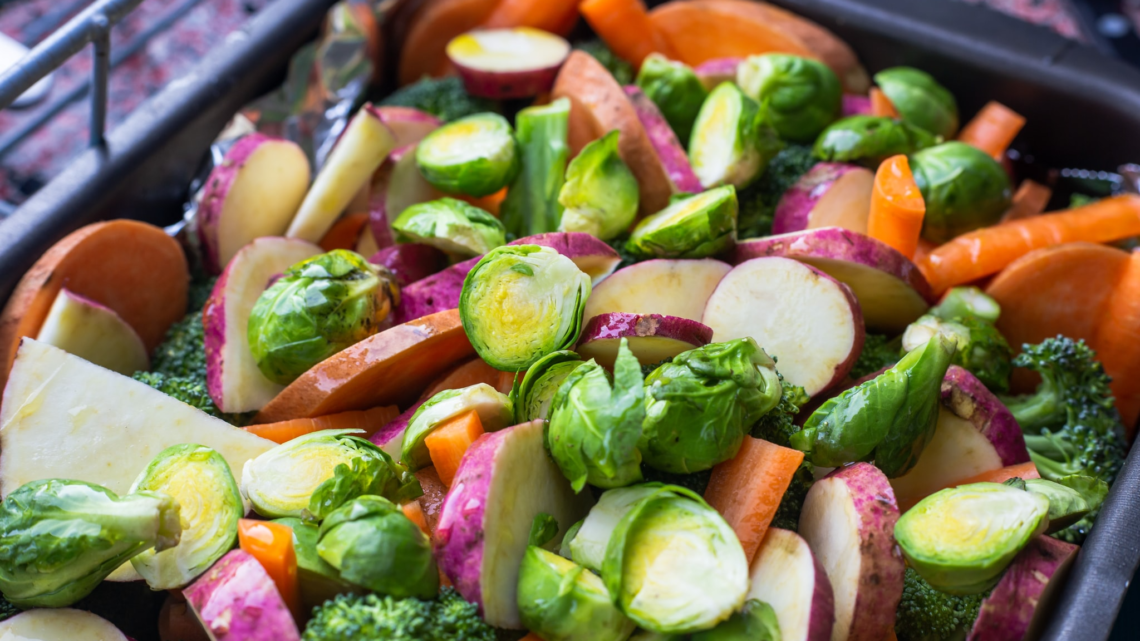
High volume foods: An easy way to eat more food for less calories
Have you ever noticed that you need to eat several slices of bread to feel full compared to a small amount of potatoes? Do you get annoyed if you are hungry 20 minutes later after eating a meal? I have the answer.
You most likely ate low volume foods. There is nothing wrong with these foods, however, you will have to eat more to feel satisfied. If you are trying to lose weight, this may make your task more difficult. Even if you are not trying to lose weight, who wants to be hungry all of the time?
The solution to crushing hunger? High volume foods.
I learned about high volume foods during my prep for my first bodybuilding competition. In this post,
I share an experience on how a particular high volume food saved me from “starvation.” After that experience, I learned how to incorporate these foods into my diet, especially during a cut.
When I incorporate high volume foods into my diet, I feel satisfied in between meals for hours and it lessens the chance of overeating later. It allows me to eat more food and makes being on a cut more tolerable. Many of these foods also provide essential nutrients and contribute to a balanced diet.
If you want to eat more food for less calories, continue reading to learn about high volume foods and examples you can incorporate into you diet today!
Table of Contents
What are high volume foods?
High volume foods are foods that are high in volume, but low in calories. Essentially, they are foods that fill you up in large quantities without excessive calories. Many of these foods are high in water and fiber content. A diet based on these foods is called volume eating, or a volumetric diet.
How can volume eating help me?
Utilizing volume eating during a weight loss diet can help in several ways:
- Keep you fuller for longer reducing the chance of overeating
- Many volume foods contain fiber, which helps keep you full and regulates digestion
- Can make incorporating healthier food options into the diet easier instead of processed foods
Potential issues of volume eating
- There are no guidelines which may make implementation difficult
- A sudden increase in fiber may cause digestive discomfort for some individuals
- Requires some knowledge and strategy to be effective
- Excessive portions or preparation methods like frying can contribute to weight gain
List of high volume foods
Here are some examples of high volume foods (this list is not exhaustive):
Vegetables
- salad greens (kale, lettuce, argula)
- celery
- zucchini
- radishes
- brussel sprouts
- bok choy
- cauliflower
- broccoli
- cucumbers
Fruits
- watermelon
- berries (strawberries, blueberries, etc.)
- plum
- honeydew melon
Grains
- potatoes
- chia seeds
- oatmeal
- soba noodles
- popcorn (avoid “movie style”)
- rice cakes
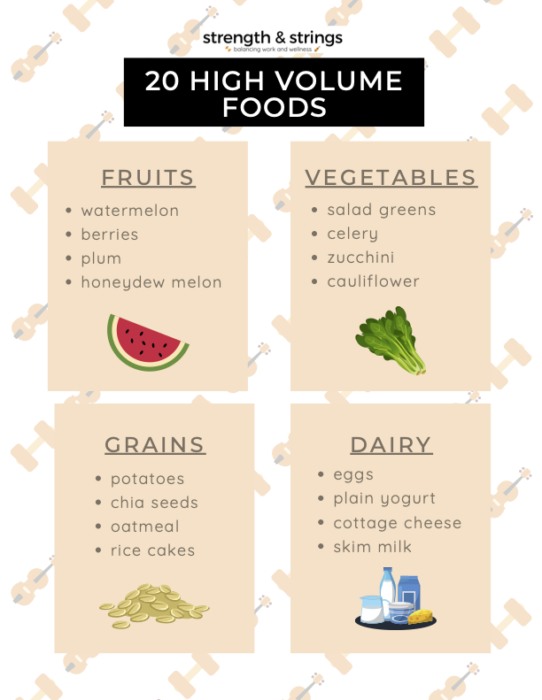
Dairy
- eggs
- non-fat plain yogurt
- low-fat cottage cheese
- skim milk
Meat
- chicken breast
- eye of round steak
- turkey breast deli meat
- cod
- salmon
- pork tenderloin
- shellfish (shrimp, mussels)
Legumes
- tofu
- kidney beans
- lentils
Other
- almond milk
- powdered peanut butter
- broth-based soups
Final thoughts
This article is not a substitute for medical advice and you should contact a medical professional before making changes to your diet.
Regardless of your dietary goals, consider incorporating these foods into your diet since they can keep you satiated, are nutrient-dense, contain fiber and can help you maintain a healthy and balanced diet.
Do you incorporate high volume foods into your diet? Let me know in the comments!
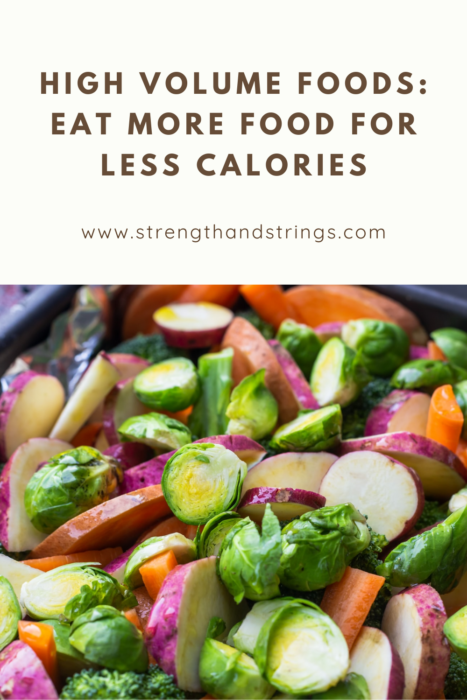


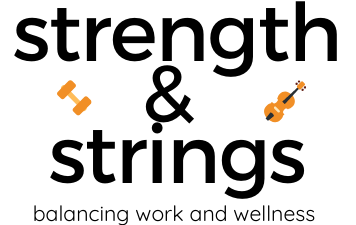
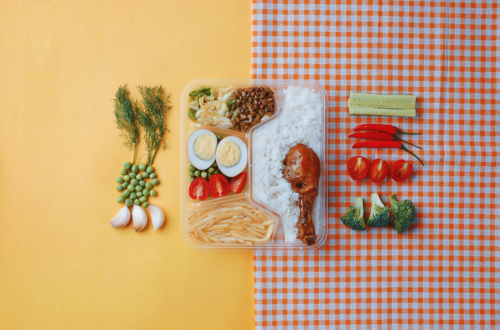
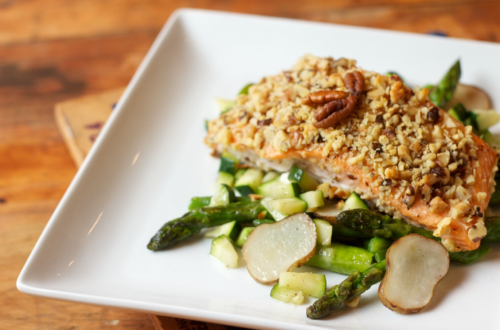
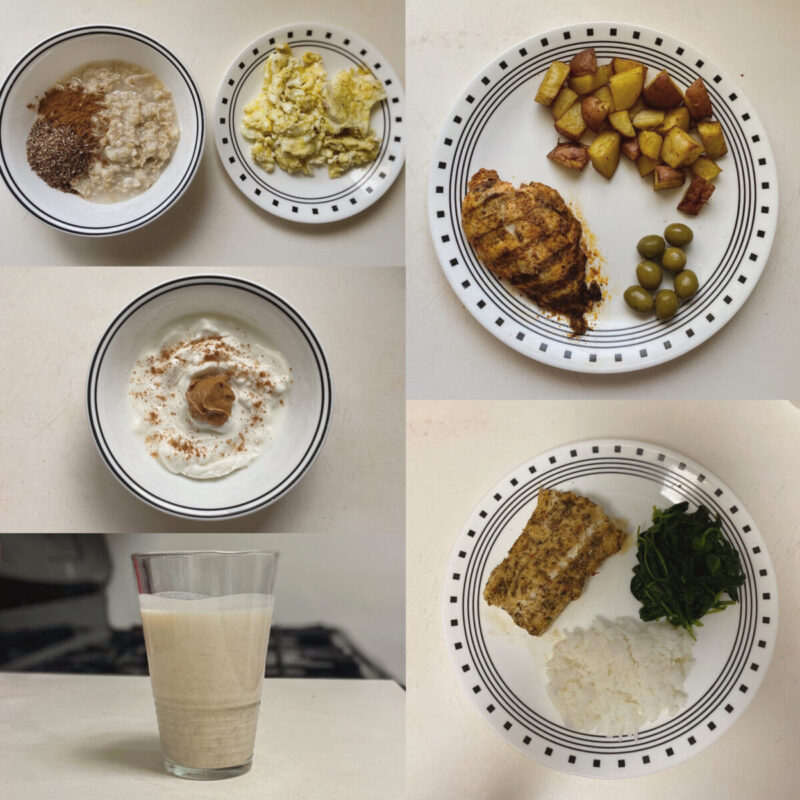
20 Comments
Jessica
I’m trying to quit reaching for sugar every time I want a snack. These are some great foods I need to keep better stock of. Thanks!!
Sapphire
Glad I could help!
Jackie
Another great way to feel full is eating higher satiety foods. This is good for folks who can’t volume eat without feeling stuffed. Foods high in fat (unsaturated preferably) paired with a lean protein and whole grain are perfect!
Love this list for volume eaters!
Sapphire
That’s a great tip! I personally like to combine the two.
Shanta Marie Whitaker
Thanks for sharing a list of high volume foods! I am in the process of sweating for my wedding and I am always looking for great tips on maintaining good health.
Sapphire
You’re welcome and congrats!
Cassie
Thanks for the great information!
Sapphire
You’re welcome!
Arlene
great post I so relate, I learned about high volume foods many yrs ago and actually taught my kids, it is so true about feeling satisfied for a lot longer.. wow congrats on staying with a healthy body as well, great info thanks for sharing.
Sapphire
I think it’s awesome that you are teaching your kids healthy eating habits!
Robyn
This list of high volume foods is great! It makes planning meals so much easier. Thanks!
Sapphire
Happy that you found it helpful!
Ayanna
Thank you so much for sharing. I have the body type that gains weight easily. I don’t eat very much either and tend to feel hungry fast. These tips are a great help for me personally. I love your blog already!❤️ Keep up the good work.
Sapphire
Thank you!
Kathleen Wonders
Thanks for this! I’m trying to opt for these high volume foods more often and have bought bags of beans and lentils! Can’t wait to try out some delicious recipes with these. 😀
Sapphire
Let me know how it goes!
Denise Lenahan
It’s always great to find out other healthy eating tips to help you move forward on a healthy journey. These are great and knowing I’m doing it right is a bonus.
Great job girl! 👍
Sapphire
That’s great to hear and keep it up!
Alyse
I love this article on high volume foods! I also love potatoes so I’m glad to see those on the list. Thanks for sharing!
Sapphire
Thank you!